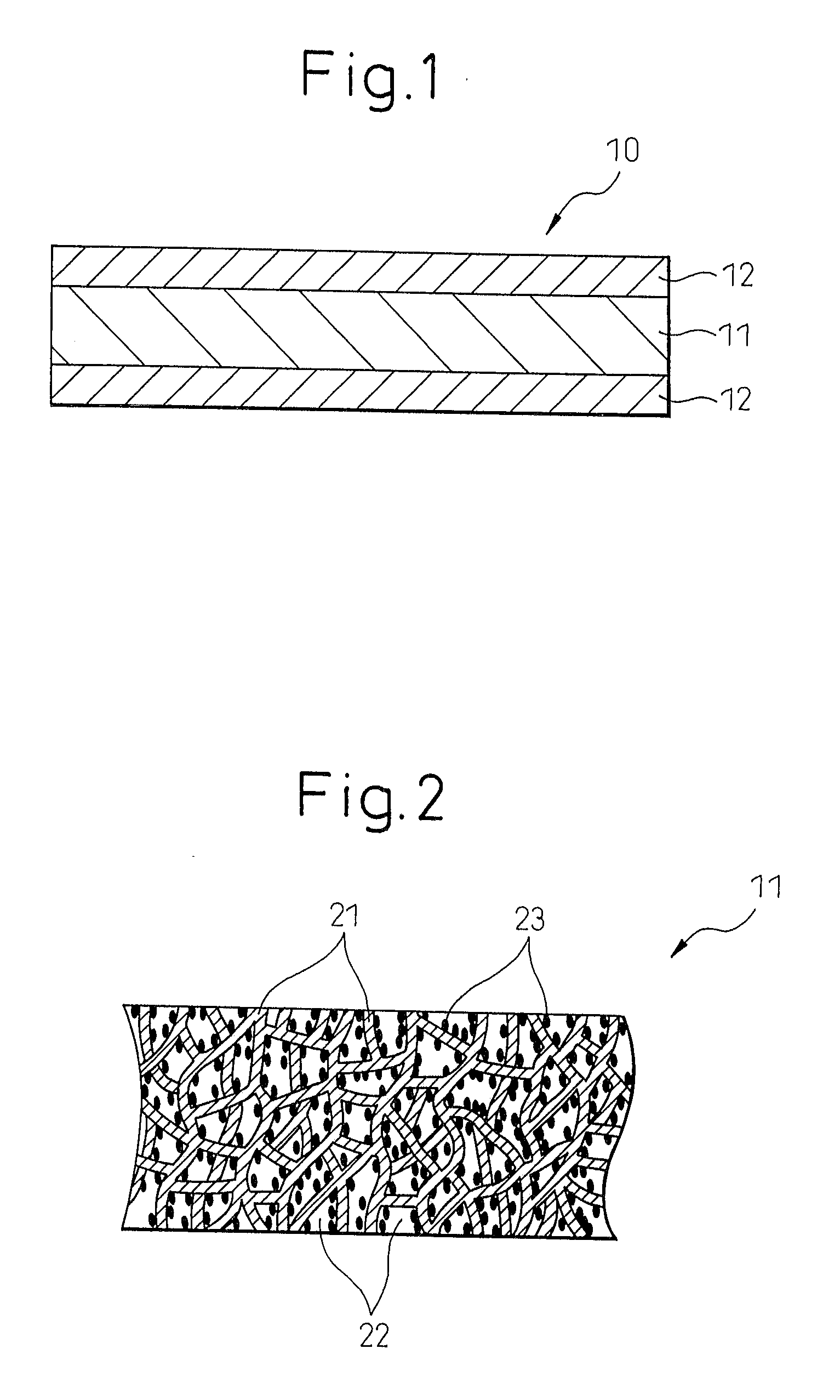Reinforced Solid Polymer Electrolyte Composite Membrane, Membrane Eelctrode Assembly For Solid Polymer Fuel Cell, and Solid Polymer Fuel Cell
a solid polymer fuel cell and composite membrane technology, applied in the direction of electrolytes, cell components, electrochemical generators, etc., can solve the problems of affecting the adhesion of the polymer electrolyte membrane to other, deformation of the polymer electrolyte membrane, breakage of the electrolyte membrane, etc., to enhance the operational stability over time of the solid polymer fuel cell and mechanical durability
- Summary
- Abstract
- Description
- Claims
- Application Information
AI Technical Summary
Benefits of technology
Problems solved by technology
Method used
Image
Examples
example 1
[0048]A dispersion of a peroxide decomposition catalyst (CeO2) was prepared by mixing 10 parts by mass of cerium oxide sol (manufactured by Daiichi Kigenso Kagaku Kogyo, average particle size: 10 nm, density: 15% by mass), 80 parts by mass of ethanol, and 10 parts by mass of ion exchange water. Next, a porous expanded PTFE membrane (thickness: 8.5 μm, porosity: 80%, average pore size: 0.5 μm, tensile strength: 45 MPa, weight per unit area: 4.0 g / m2) was immersed in the dispersion. After that, the porous expanded PTFE membrane was placed in an oven and dried at 100° C. for 10 minutes, to produce a sheet-like porous reinforcing member containing CeO2. A polymer electrolyte resin solution having an ion exchange capacity of 0.9 meq / g (Nafion (registered trademark) SE-20192 manufactured by DuPont) was applied over an ethylene-tetrafluoroethylene copolymer (ETFE) film to form a coating with a thickness of 200 μm. Next, the sheet-like porous reinforcing member was placed in contact with th...
example 2
[0049]The same polymer electrolyte resin solution as that used in Example 1 was applied over an ETFE film to form a coating with a thickness of 200 μm, which was then dried in an oven at 140° C. for 5 minutes. Next, a mixture was prepared by adding 30 parts by mass of the polymer electrolyte resin solution to 10 parts by mass of the dispersion of the peroxide decomposition catalyst (CeO2) prepared in the same manner as in Example 1. The mixture was applied over the dried coating to form a coating with a thickness of 100 μm, and a porous expanded PTFE membrane (thickness: 8.5 μm, porosity: 80%, average pore size: 0.5 μm, tensile strength: 45 MPa, weight per unit area: 4.0 g / m2) was placed in contact with that coating, to produce an impregnated membrane. The impregnated membrane was then dried in a thermostatic chamber at 140° C. for 5 minutes. After that, the same polymer electrolyte resin solution as that used in Example 1 was applied over the impregnated membrane to a thickness of ...
PUM
| Property | Measurement | Unit |
|---|---|---|
| thickness | aaaaa | aaaaa |
| thickness | aaaaa | aaaaa |
| porosity | aaaaa | aaaaa |
Abstract
Description
Claims
Application Information
 Login to View More
Login to View More - R&D
- Intellectual Property
- Life Sciences
- Materials
- Tech Scout
- Unparalleled Data Quality
- Higher Quality Content
- 60% Fewer Hallucinations
Browse by: Latest US Patents, China's latest patents, Technical Efficacy Thesaurus, Application Domain, Technology Topic, Popular Technical Reports.
© 2025 PatSnap. All rights reserved.Legal|Privacy policy|Modern Slavery Act Transparency Statement|Sitemap|About US| Contact US: help@patsnap.com



